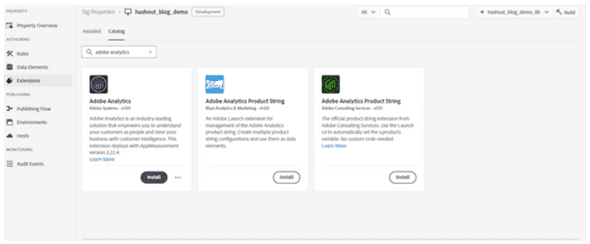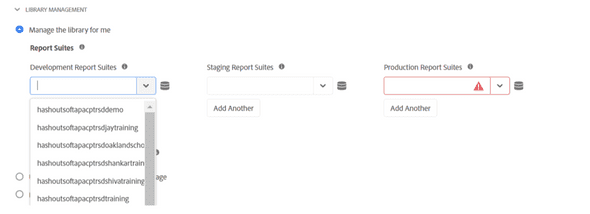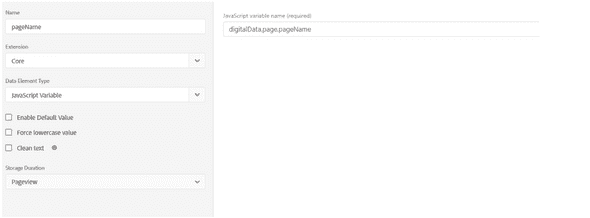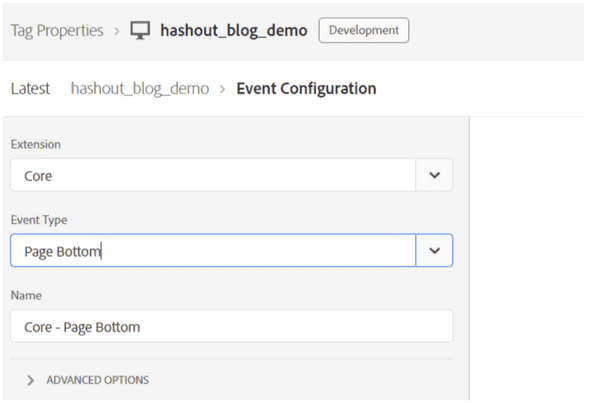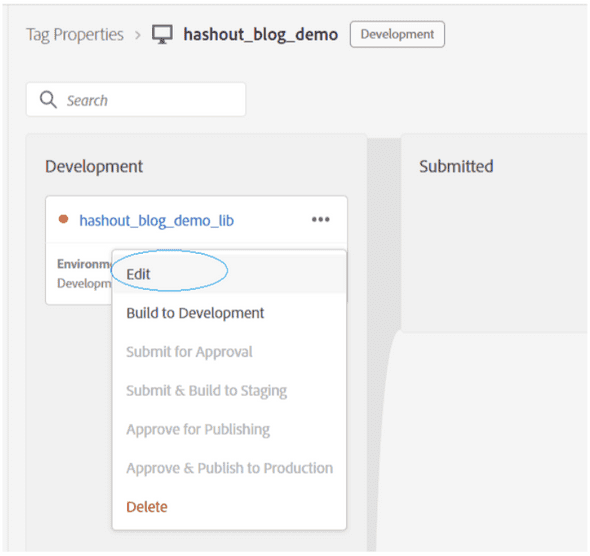Part 3 - Getting started with Adobe Analytics - capturing data using Adobe Launch
In the previous blog, we tagged the website using Launch. Now, we will capture the page name using Launch and send the data to Adobe Analytics. There are four parts to it.
- Installing Adobe Analytics Extension for Launch
- Creating a data element
- Creating a rule
- Publishing the changes
Installing Adobe Analytics Extension for Launch
Go inside the Launch property which we created in the previous blog.
From the LHS menu, go to Extensions-> Catalog
Search for Adobe analytics
Install the Adobe Analytics Extension.
Now click on “Configure”.
Select the report suite into which you want to be sending data. If you do not have a test report suite, create one by visiting this . For demo purpose, we can choose the same report suite for development and production. However, in real life, they will always be different.
Next, click save to the library on the top right.
Creating a data element
Inside the LHS menu , click on
Data Element->Create New Data Element
Enter the following details:
Name: pageName
Extension:Core
Data Element Type: JavaScript Variable
JavaScriptVariable name: digitalData.page.pageName
digitalData.page.pageName fetches the page name from the data layer defined in index.html. If there is no data layer in your website, replace it with document.title to consider the title of the page as page name.
Creating a rule
We will create rule using the following steps:
- Defining the event which will cause the rule to be triggered (page load)
- Adding further conditional check (we will skip this)
- Setting the page name variable to desired value
- Sending the beacon so that data is sent to Adobe Analytics server
From LHS menu,
Click on Rules->Create new rule
Give a name for your rule.
Under Events->Give Add
Select the Event Type as Page Bottom.
After saving the changes, go to Actions->Add
Choose Extension as Adobe Analytics;
Action type: Set Variables
Scroll down to Additional Settings. Click on the symbol next to Page Name. The data element that we created in previous step will be listed. Select the data element. By doing this, page name variable will be assigned the value from the data element.
Now that we have set the variables, we need to send the value to the Adobe Analytics server. Click on the plus symbol next to Actions.
Select Extension as Adobe Analytics. Action Type as Send Beacon. We will save the changes to the library.
Publishing the changes
In the LHS menu, go to the Publishing flow.
Click on the three dots next to the library and click Edit.
Click on “Add all changed resources”. Save and Build to Development.
Give a few minutes for the change to reflect.
Now refresh the website and go to omnibug. Reload the page. You should see a pageview event with the Page name captured correctly.
That’s it! We have successfully tagged the website to use launch and sent the data to Adobe Analytics.
You can now go to Adobe analytics workspace and create a sample project to view the page views along with the page name.
Related Articles
Part 1 - Getting started with Adobe Analytics - Terminologies and Report Suite creation
Part 2 - Getting started with Adobe Analytics - tagging website using Adobe Launch
Implementing Adobe Analytics for Gatsby site

